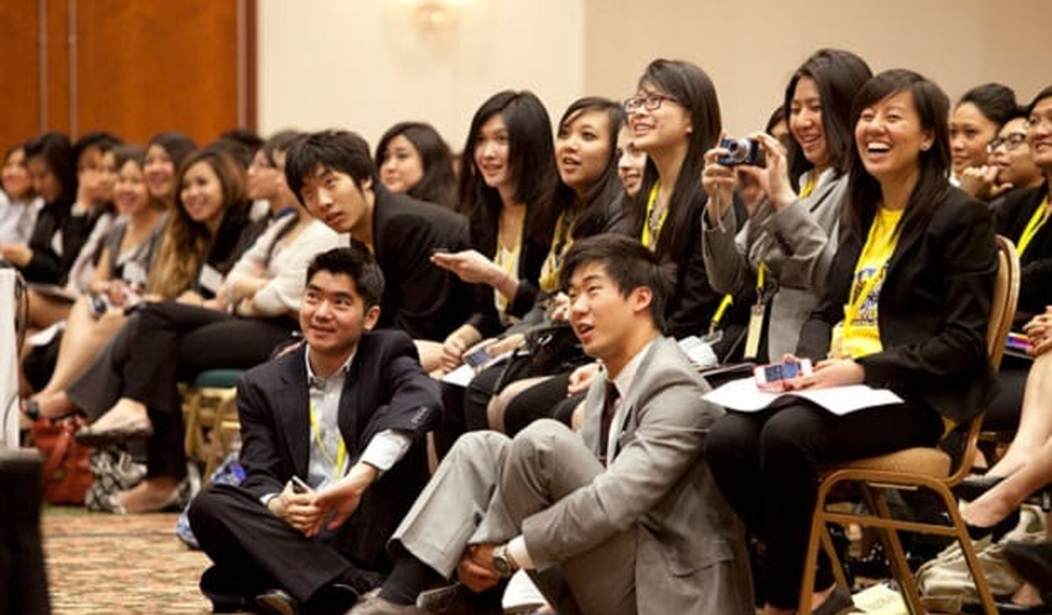In the 1920s many Ivy League schools faced a conundrum. Their admissions policy was based on how an applicant placed on an admissions test. If you scored high enough, you were admitted. Under that system the dimwitted scions of major donors were being turned away in favor of *gasp, horror* the sons of Jewish immigrants. According to Jerome Karabel in The Chosen: The Hidden History of Admission and Exclusion at Harvard, Yale, and Princeton they first tried benign methods:
That was precisely why the system was judged to be no longer viable because too many of the wrong students, the “undesirable” students — that is, predominantly, Jewish students of East European background — started to pass the exams.
So an entirely new system of admissions was invented with emphasis on such things as character, leadership, personality, alumni parentage, athletic ability, geographical diversity. They started, for the first time, to do interviews. They introduced photos. A lot of things, which we take for granted today, in fact, were introduced in this period and have endured to the present.
But that wasn’t sufficient:
Well, at Harvard, the Jewish proportion of the freshmen class in 1925 had reached 28 percent and shortly thereafter, after a very protracted and bitter struggle, which lasted from 1922 really to 1926, Harvard imposed a 15 percent quota. At Yale, the proportion of Jews had reached toward 14 percent and in 1924, they imposed a 10 percent quota. At Princeton where the proportion of Jews had gotten only to 3.6 percent, they decided that that was excessive and they cut the proportion of Jews to 2 percent in 1924. That’s in contrast to African Americans, who were totally excluded from Princeton until 1945.
Now it seems that exactly the same system is in effect in the admissions of Asian students:
Harvard University’s affirmative action policies, which the school says are aimed at achieving diversity on the vaunted campus of Cambridge, discriminate against Asians who often can’t get in despite having higher test scores and grade-point averages than black and Hispanic students who are accepted, according to a lawsuit filed Monday.
Edward Blum, who runs the Project on Fair Representation, which filed the suit on behalf of Asian students who were rejected by the school, said it is a clear case of favoring certain racial groups over others.
“Quotas and racial balancing are strictly against the law,” said Blum, whose group sued the University of Texas on behalf of a white applicant over its affirmative action admissions policies in a case that went to the U.S. Supreme Court last year.
At first blush, the have a good case. Analysis of admissions at “elite” universities show that being Asian equates to knocking 140 points off your SAT. An Asian applicant scoring 1500 has the same chance as a white kid with 1360. This holds true regardless of your SAT score. In fact, Asians have a significantly lower admission rate in any SAT score band:
In the words of Ron Unz, who has studied admissions patterns, in the National Review:
Over the last 20 years, America’s population of college-age Asian Americans has roughly doubled; but during this same period, the number admitted to Harvard and most other Ivy League schools has held steady or even declined, despite significant improvement in Asian academic performance. Furthermore, the Asian percentages at all Ivy League schools have recently converged to a very narrow range and remained static over time, which seems quite suspicious.
Meanwhile, the Californian Institute of Technology (Caltech) follows a highly selective but strictly race-neutral admissions policy, and its enrollment of Asian Americans has grown almost exactly in line with the growth of the Asian-American population.
Racial preferences, no matter how they are applied, are pernicious. They were marginally less so in the era immediately following Jim Crow but they work against what American stands for. When quotas are implemented with the purpose of harming racial and ethnic minorities they are indefensible in a way that Affirmative Action admissions can never be and represent a throwback to an era we all thought we’d left behind.
















Join the conversation as a VIP Member